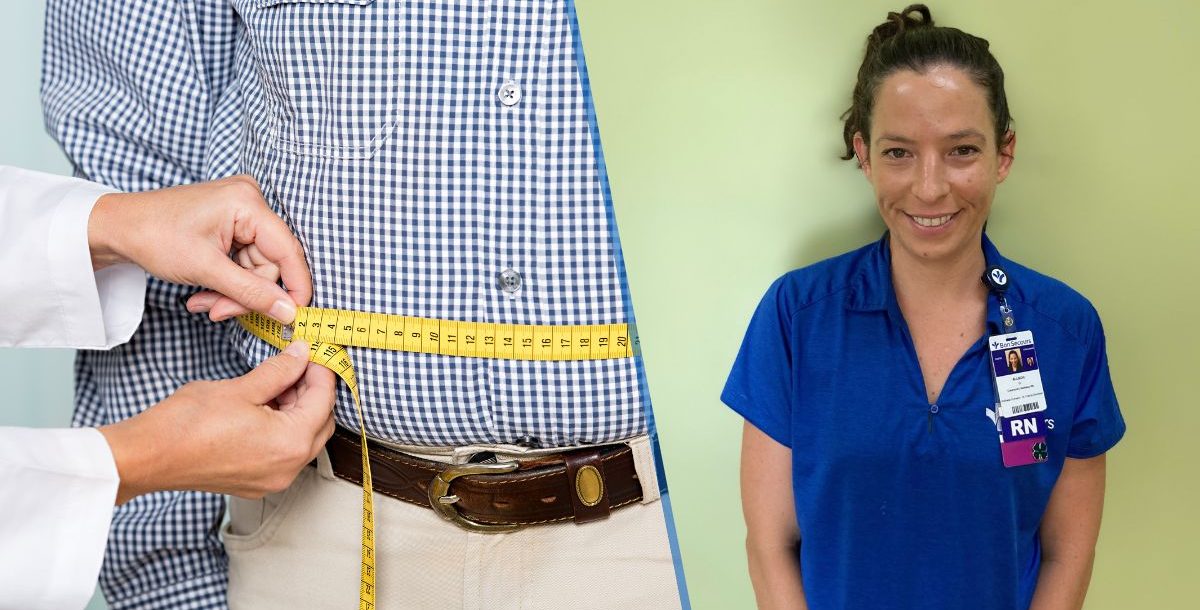You could have prediabetes, but you may not know it. This is because more than one in three adults in the United States have it, but don’t always have prediabetes warning signs.
“Prediabetes affects 96 million adult Americans, but 80 percent of those people don’t know they have it,” Allison Harrold, a community wellness nurse at Bon Secours St. Francis, explains. “They just aren’t aware because they typically aren’t having any symptoms. Because you can be asymptomatic, it’s important to get tested if you have any risk factors for prediabetes.”
It helps to know if you do have prediabetes so you can stop it in its tracks. That means you can also avoid developing type 2 diabetes, a more dangerous disease that causes other serious health issues.
What is prediabetes?
Prediabetes involves your blood sugar levels. You’ll have too much sugar in your blood but not enough to meet the criteria for diabetes.
“Once you have a diagnosis of prediabetes or insulin resistance, you are at risk for developing type 2 diabetes,” Allison warns. “In fact, without intervention, many people will progress to type 2 diabetes within five years.”
Blood sugar, another name for blood glucose, is important to control throughout your life. Blood sugar is the main sugar that’s found in your blood. It comes from the food you eat, and it’s the main source of energy your body uses every day. Your blood carries the sugar to your body’s cells.
Even though prediabetes is not full-blown diabetes, having too much sugar in your blood can still damage your organs — especially your kidneys. It may cause you to have too much protein in your urine, which stresses your kidneys.
Risk factors for prediabetes
Sometimes, the symptoms of prediabetes can go away if you take better care of your health. However, they can return if you fall back into an unhealthy lifestyle.
“Being overweight and physically inactive are thought to be two of the main risk factors for prediabetes – both are linked to insulin resistance,” Allison shares. “Your body needs insulin to unlock your cells and help glucose enter your cells from your blood to use for energy. In insulin resistance, your body does not respond as well to insulin, and glucose can’t enter the cells as easily.”
It’s important to be aware of prediabetes, especially if you’re over 45 years of age. You’re also at risk for developing prediabetes if you have any of these medical issues:
- Cardiovascular disease
- Diabetes in your family
- Gestational diabetes while you were pregnant
- High blood pressure
- High cholesterol
- Overweight
- Sedentary lifestyle
There are also things you can do to reduce your risk of developing prediabetes.
“Losing even a small amount of weight – say 5 to 7 percent of your body weight – has been associated with reduced chance of developing type 2 diabetes,” Allison adds.
Prediabetes warning signs
Though it can be hard to tell if you have it, you can look for subtle prediabetes warning signs.
If you have one of the symptoms, it does not mean you have prediabetes. However, you may want to discuss it with your primary care provider at your next appointment.
Symptoms include:
- Blurry vision
- Cold hands and feet
- Dry mouth
- Excessive thirst
- Frequent urination
- Increase in urinary tract infections
- Increased irritability, nervousness or anxiety
- Itchy skin
- Odd sensations, such as tingling, numbness, pain or burning in your extremities
- Recurring infections
- Thick, dark, velvety patches on your skin (especially near armpits, neck and elbows)
- Unexplained weight loss
- Unusual fatigue
- Wounds that won’t heal fast
A blood test can tell if you have prediabetes. There are several different types and they are the same tests that diagnose type 2 diabetes. Talk with your primary care provider to see if you need one of these tests.
Reversing prediabetes
Identifying prediabetes warning signs can help you react early. If you are diagnosed with prediabetes, that’s a signal to take action to protect your health! Most people diagnosed with prediabetes develop type 2 diabetes within five years. This means you should have time to prevent this from happening.
On the other hand, it takes about three years to reverse prediabetes. You also have to change your lifestyle. To reverse a diagnosis of prediabetes, take the following steps:
- Eat a clean and healthy diet.
- Drink more water.
- Shed 5 to 7 percent of your body weight.
- Stop smoking.
- Walk or exercise for 30 minutes a day, five days a week.
Bon Secours St. Francis in our Greenville market offers prediabetes education and diabetes self-management education through its wellness outreach program. It’s available to anyone, regardless of whether you are insured or uninsured. Call 864-241-5125 to learn more.
Learn more about the primary care services we provide at Bon Secours.





